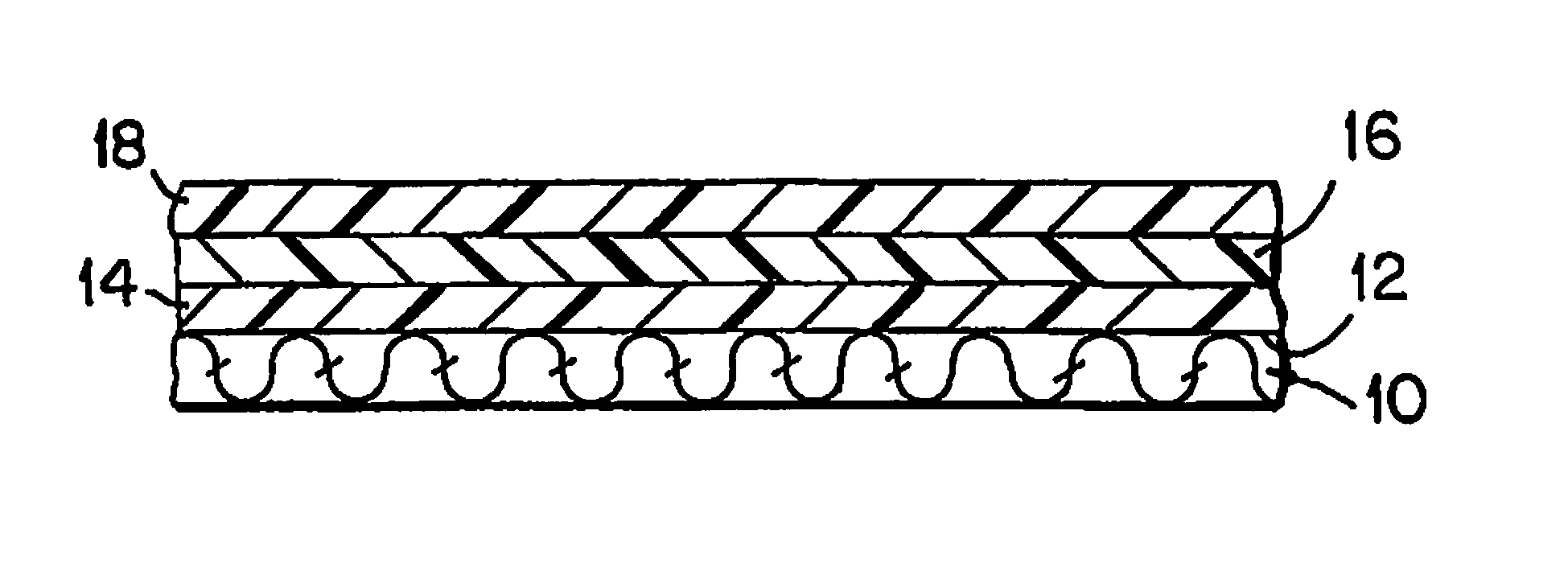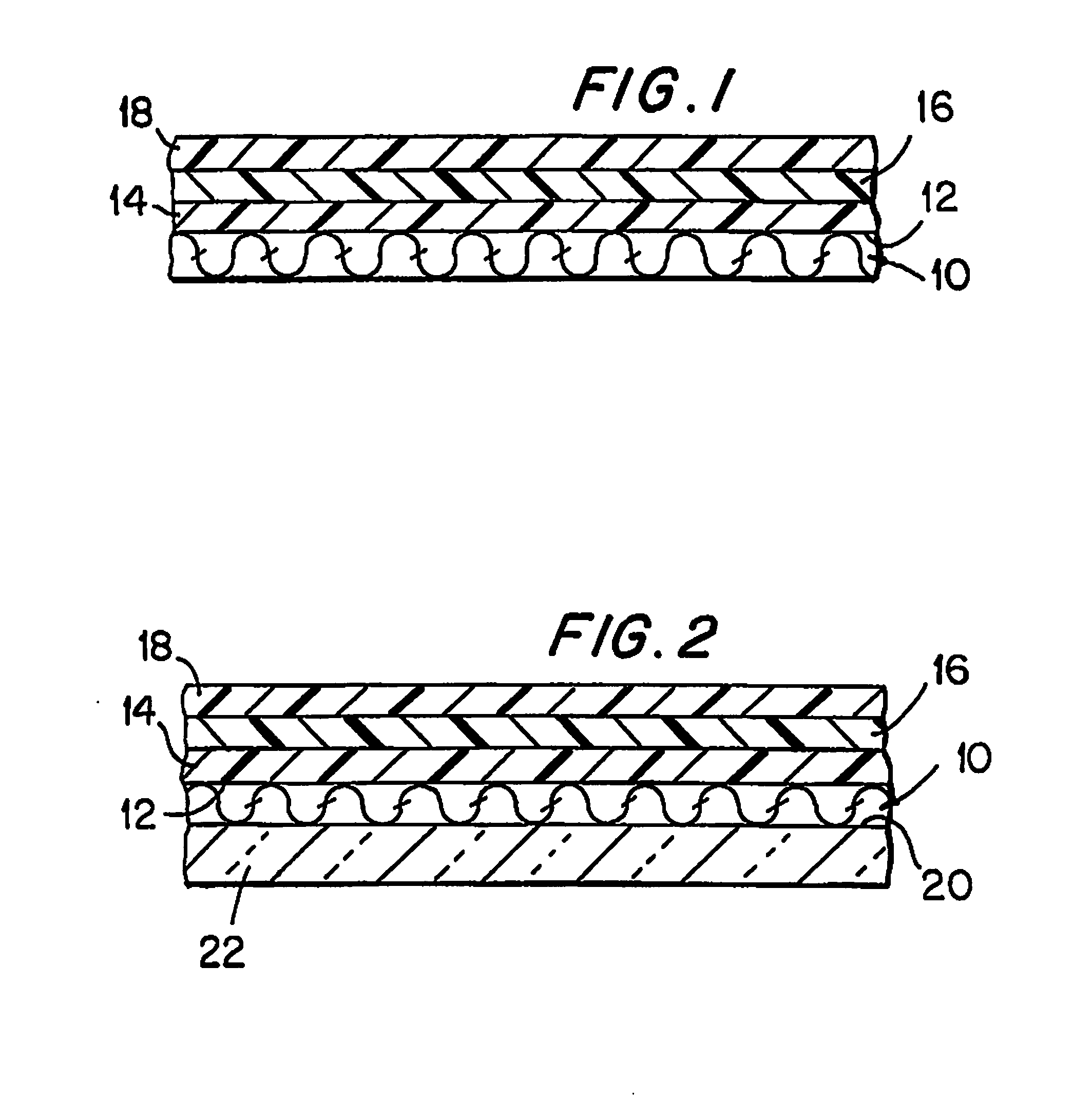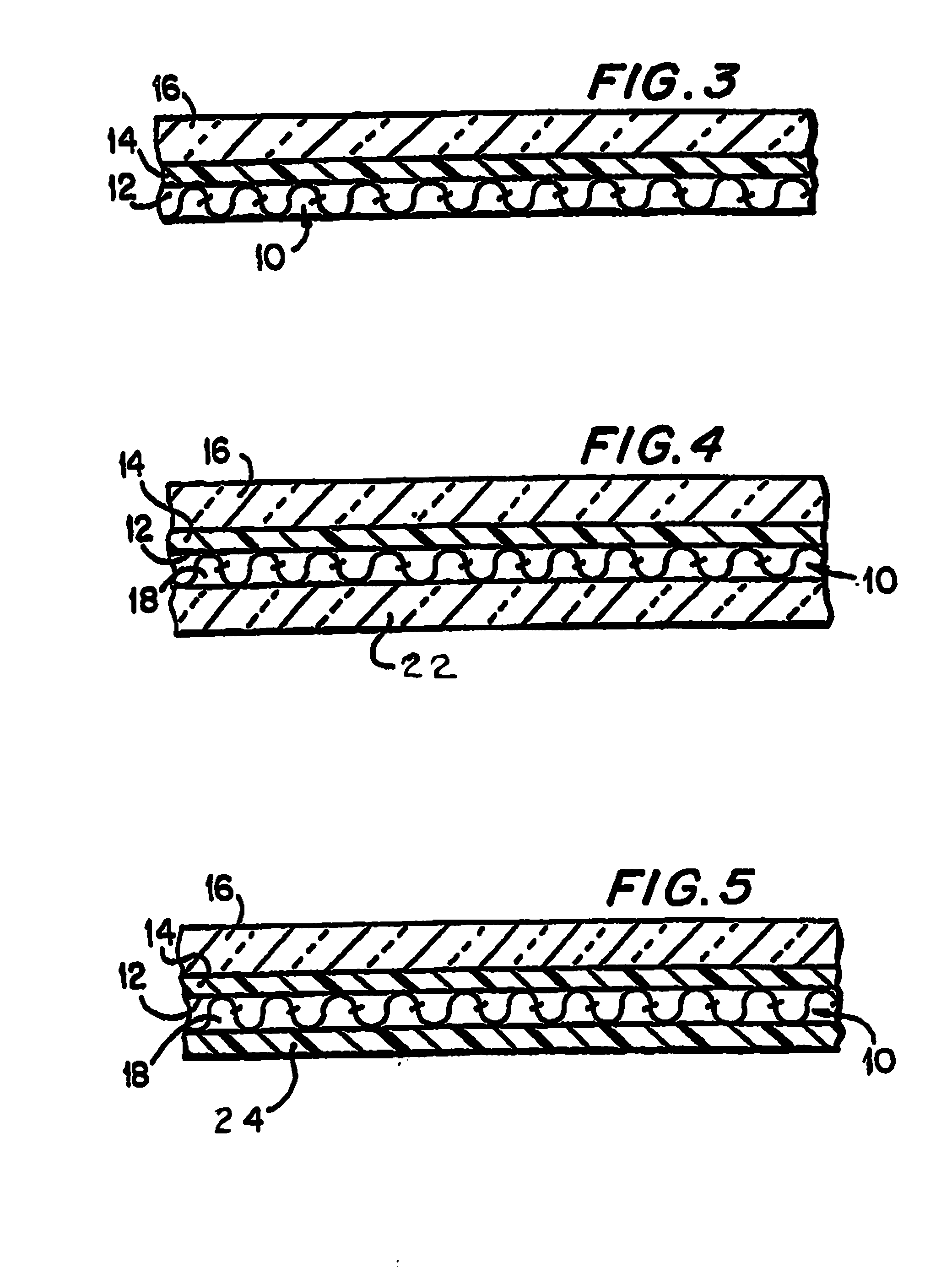Polyvinyl chloride coated fabrics for use in air bags
a polyvinyl chloride and air bag technology, applied in weaving, pedestrian/occupant safety arrangements, vehicular safety arrangements, etc., can solve the problems of difficult to obtain strong adhesion of the coating material to the substrate, inability to heat seal the coating, and inability to withstand the impact of the air bag, so as to reduce the size of the interstitial space in the woven yarn, the effect of reducing the size of the interstitial spa
- Summary
- Abstract
- Description
- Claims
- Application Information
AI Technical Summary
Benefits of technology
Problems solved by technology
Method used
Image
Examples
Embodiment Construction
[0036]It has been found that when woven textile fabric substrates, including those having preconfigured air-holding cavities therein, are coated with multiple layers of polymeric coatings, including polyurethane and / or polyvinyl chloride, such coated fabrics can be used to produce air-holding vehicle safety restraint systems having improved air retention, air permeability and volume properties. Such coated fabric substrates have the additional ability to be joined by means other than, or in addition to, sewing, including such means as heat sealing, radio frequency (RF) welding, and vulcanization. It has also been found that when such textile fabrics are coated with a polyurethane layer and thereafter, with a layer of polyvinyl chloride, or layers of polyvinyl chloride and polyurethane, and converted into an air bag or other vehicle restraint device such as a side air curtain, they exhibit improved air-holding characteristics. Examples of the methods of coating such fabrics are discl...
PUM
| Property | Measurement | Unit |
|---|---|---|
| length | aaaaa | aaaaa |
| deployment pressures | aaaaa | aaaaa |
| deployment pressures | aaaaa | aaaaa |
Abstract
Description
Claims
Application Information
 Login to View More
Login to View More - R&D
- Intellectual Property
- Life Sciences
- Materials
- Tech Scout
- Unparalleled Data Quality
- Higher Quality Content
- 60% Fewer Hallucinations
Browse by: Latest US Patents, China's latest patents, Technical Efficacy Thesaurus, Application Domain, Technology Topic, Popular Technical Reports.
© 2025 PatSnap. All rights reserved.Legal|Privacy policy|Modern Slavery Act Transparency Statement|Sitemap|About US| Contact US: help@patsnap.com



